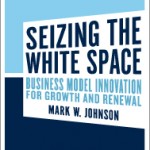Jul14
Innovation and Your Inner Animal
Point: Innovation may be less about technical specs and more about emotional connections.
Story:
When we think of innovation, we often think of intelligence, brilliance, and genius. Yet two speakers at the World Innovation Forum highlighted the large and less-rational depths of the human mind. Inside us all is an inner animal that significantly influences the path of innovation.
First, Seth Godin (author of Purple Cow, Tribes and, most recently, Linchpin) referred to the “lizard brain” — the primitive beast that lurks deep inside our heads. Humans may have evolved a nice primate brain full of intelligence, rational analysis, and dispassionate logic, but when the lizard feels threatened, s/he takes over. Second, Chip Health (author of Made to Stick and, most recently, Switch) introduced  Jonathan Haidt’s notion of the rider and the elephant. The rider represents the rational, logical mind of humans. The elephant represents the more primitive, lumbering forces of emotion. In essence, the elephant is just a larger metaphor for the lizard. Godin and Heath are not the first to have noticed the inner animal. Even Plato talked of the steady charioteer vs. the surging war horse when explaining the perpetual tussle we experience between our rational and emotional sides.
Jonathan Haidt’s notion of the rider and the elephant. The rider represents the rational, logical mind of humans. The elephant represents the more primitive, lumbering forces of emotion. In essence, the elephant is just a larger metaphor for the lizard. Godin and Heath are not the first to have noticed the inner animal. Even Plato talked of the steady charioteer vs. the surging war horse when explaining the perpetual tussle we experience between our rational and emotional sides.
What does this inner animal have to do with innovation? The inner animal explains some of the patterns of failure and success of innovations. Godin spoke of the “resistance” — that overwhelming force of fear that makes the lizard react to changes as threats. Moreover, the threatened lizard actually co-opts the more rational rider into making rationalizations — all the “yes, buts” that impede innovation. This resistance gives us the inertia of the elephant and forestalls innovation.
Yet the inner animal isn’t only about resistance to change. Heath noted that people do willingly make massive changes in their lives, such as when they get married or have kids. Clearly, affairs of the heart can bypass change resistance. This gives an avenue of advancement for innovation. Robert Brunner (former director of Industrial Design at Apple) spoke of brand as being a gut feeling and of products being more that just physical objects. Innovation and design can and should connect to people’s hearts.
Certainly our world needs innovations that deliver quantitative performance improvements, such as 20% more fuel economy or 50% less cycle time. Yet it’s the innovations that deliver oodles of more fun, excitement, and inspiration that grab public consciousness. Innovation may be less about the world of PowerPoint slides, feature checklists, and action-items. Instead, innovation that overcomes change resistance and gains large market share may be much more about the world of emotional resonance, heart, and social connection.
Action:
- Motivate the elephant with visceral/emotional stories and images — make change exciting and compelling rather than merely rational
- Direct the rider by using the emotion of the elephant to avoid paralysis by analysis
- Shape the path to make it easier for both rider and elephant (for example, Amazon’s 1-click makes purchasing efficient for the rider as well as impulsive for the elephant).












